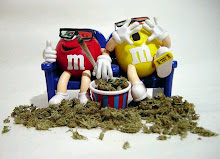The time honored tradition of the sports riot is still alive & well in America.
After West Virginia’s victory last night over Texas Tech in the NCAA Division I Basketball Championship Tournament’s Sweet Sixteen, students in Morgantown set over 50 fires in celebration of the Mountaineers’ success. Firemen extinguished all the fires yet were obstructed from their duties on several occasions. The Morgantown fire department issued several citations and one fire fighter was hit in the head by a full beer can. Morgantown has a day to brace for what could be another night of revelry if W. Virginia advances to the Final Four.
Ah the annual rights of winter, spring, summer, and fall. Ever since the late 80’s riots in locales where the favorite sports team wins anything have been common place. The fad started when the Detroit Pistons won their first NBA title back in ’89 and the city was kept nice and toasty by multiple fires and riotous behavior eerily reminiscent of the race riots of the 60’s.
Here in Colorado the were small scale riots in Denver after the Broncos’ Super Bowl wins and after the Avalanche won both of their Stanley Cups. I was personally tear gassed back in 2001 when the Denver cops, dressed in full riot gear, started lobbing canisters at any group of people larger than five in number. In Boulder riots sprung up after the Buffs won the college football co-National Championship in ’91 and after their back-to-back Big 12 titles a couple years ago. The Boulder city council responded by outlawing yet another tradition, the ratted out couch on the front porch. Seems many couches were used as kindling on more than one occasion.
No one does the sports riot in America like Chicago. In 1992, after the Bulls won their first NBA title, zealous fans caused $10 million in property damage in tribute to Michael Jordan and his winning ways. To date this little impromptu victory celebration is the most expensive in U.S. sports history.
But the real crown goes to the Europeans. In 1985, 39 fans were crushed to death in the infamous Heysel Stadium disaster. As a result English teams were banned from European competition for six years. On November, 17, 2004, fans of the Spanish national team hurled racist insults at two of the English side’s black players and even taunted them with monkey calls. In 1980 at Wembley Stadium thousands of Alan Minter supporters rioted after their beloved boxer was destroyed by Marvin Hagler. In 1990, soccer fans in Zagreb forced the cancellation of a match between hometown Dynamo Zagreb and the visiting Red Star Belgrade. The match was brought to a halt after ten minutes and the stadium was eventually set on fire.
Even those passive Canadians have dabbled in the riotous arts. Back in 1955 the Richard Riot gave a black eye to Montreal. On March 13 of that year Hall-of-Famer Maurice Richard was given a match penalty for deliberately injuring Hal Laycoe. Richard was suspended for the remainder of the season even as his Canadiens were battling for first place. Then NHL President Clarence Campbell refused to budge on Richard’s punishment. Canadiens’ fans were whipped into frenzy on March 17 when Campbell attended a Canadiens-Red Wings game at the Montreal Forum. Throughout the game the home-town faithful pelted Campbell with eggs, vegetables, and a host of other objects. The game was called off, forfeiting the win to Detroit, and the fans turned violent. The resulting fray resulted in $500,000 damage to the Forum and parts of the legendary arena were destroyed. As recently as 1994 Vancouver Canucks fans rioted after their team lost in the Stanley Cup finals to the New York Rangers.
The sports riot even dates back to hallowed antiquity. In 532 A.D. the Roman and Byzantine empires had established chariot races. Justinian I, then Emperor of Rome, supported a certain faction of charioteers and their fans. His allegiance to the so-called Blues was widely viewed as the reason why he commuted the death sentences of several accused murderers, who, incidentally, were also Blues supporters. Fans and members of the Blues and Greens, another chariot racing fan sect, demanded that the accused be set free. They broke into the prison and set fire to parts of Constantinople. Members of the Roman Senate saw this as an opportunity to remove Justinian from power. The Senate gained control over the rioters, stoked the fires of rebellion, and named Hypatius as the new Emperor. Justinian eventually put down the rebellion and trapped the rioters in the Hippodrome. An estimated 30,000 rioters were killed, including Hypatius.
As you can see the sports riot has a glorious history.
Friday, March 25, 2005
The time honored sports riot
Posted by
Shrubbery
at
1:41 PM
![]()
![]()
Subscribe to:
Comment Feed (RSS)


|